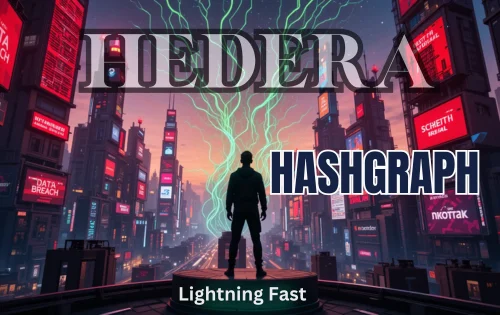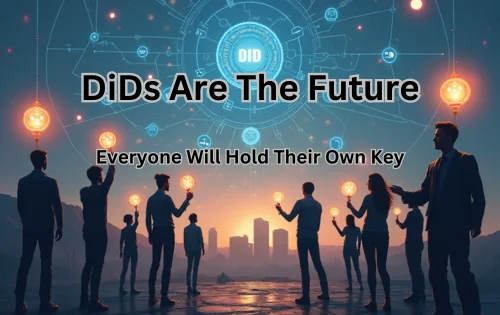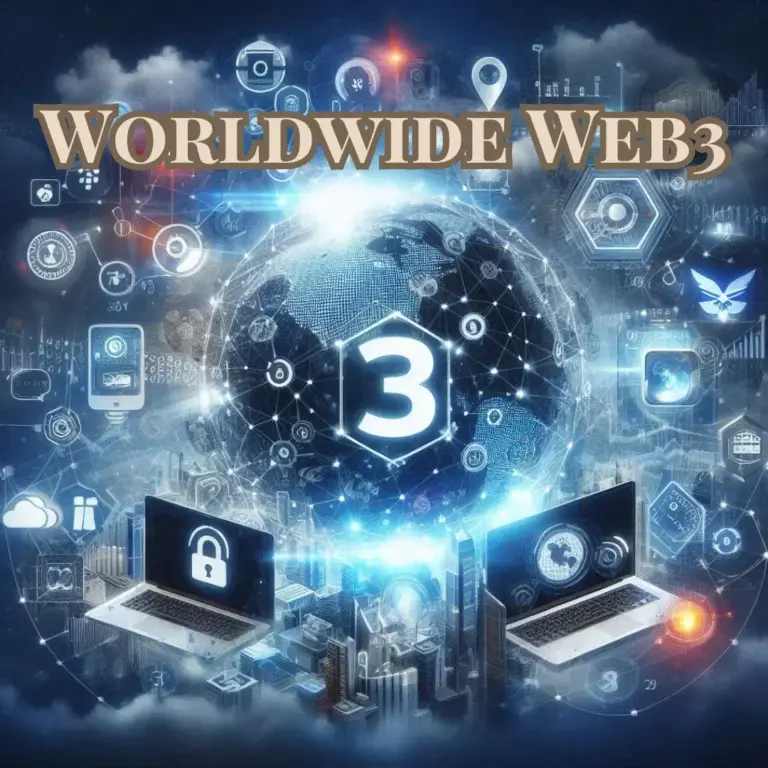Is the Complex World of Web3 Holding You Back? Let’s Break It Down!”
Web3 can seem overwhelming and confusing. With so many layers of technology, it’s hard to know where to begin. However, understanding the core components will open up incredible opportunities for navigating the future of the Internet.
Let’s climb the Web3 Pyramid, so you can get a clear understanding of what you are looking at and how to confidently navigate this new digital frontier.
The Web3 Pyramid
Quite simply the building blocks of Web3.
- The high-level concept of Web3 and why decentralization is crucial.
- The blocks that make up Web3, include blockchain, cryptocurrencies, smart contracts, and more.
- How each component, from decentralized identity to interoperability, fits into the larger picture.
- The fundamental technologies, like cryptography and consensus mechanisms, that keep Web3 secure.
- Why understanding these layers will help you leverage Web3 in your own digital ventures.
Your Minds Eye to Replace Web2 With Web3
After reading this post, you’ll have a solid understanding of the Web3 ecosystem and how it all connects. You’ll be ready to explore how decentralized systems can offer you more control, security, and new opportunities in the digital space.
Explore Web3 Tools & Resources
Let’s explore the World of Web3, starting from the broadest level and gradually climbing up into its most fundamental components, much like how Carl Sagan might explore the universe. Each level will be a zoomed-in look at a piece of the puzzle.
The Universe of Web3
At the Foundational level, Web3 is the future of the internet, a new era of the web that shifts the power from centralized institutions (e.g., tech giants like Google, Amazon, and Facebook) to decentralized networks. The core idea of Web3 is to give individuals more control over their own data, identity, and financial interactions without relying on intermediaries.
Puzzle Piece at This Level: Decentralization – Power is distributed across a network rather than being concentrated in the hands of a few centralized entities. Think of it as the opposite of Web2, where large corporations control vast amounts of data and infrastructure.
Decentralization in Action – BitTorrent, a decentralized file-sharing protocol, allows users to share files directly with each other without relying on centralized servers.
1. The Decentralized Web (Web3’s Core)
Web3 operates on the concept of decentralization, utilizing blockchain technology as the foundation for this new decentralized internet. A blockchain is a distributed digital ledger that records transactions across multiple computers in a way that makes it nearly impossible to alter or hack. This ensures transparency, security, and immutability of data.
Puzzle Piece at This Level: Blockchain – Blockchain is the infrastructure that supports Web3, allowing transactions and data exchanges to happen directly between individuals (peer-to-peer) without needing an intermediary like a bank or tech company.
Blockchain in Action – Bitcoin, the first cryptocurrency, demonstrates the power of blockchain technology to facilitate secure and transparent peer-to-peer transactions.
2. Cryptocurrencies and Tokens
At the heart of Web3, you’ll find cryptocurrencies and tokens, which are digital assets that represent value or ownership on the blockchain. Bitcoin and Ethereum are the most famous cryptocurrencies, but Web3 supports a vast ecosystem of digital assets, each serving different purposes, such as governance tokens, stablecoins, or NFTs (non-fungible tokens).
Puzzle Piece at This Level: Cryptocurrency – Web3 isn’t just about decentralized data; it’s also about decentralized finance. Cryptocurrencies allow individuals to transact globally, transfer value, and store wealth without relying on centralized banks or financial institutions.
Cryptocurrency in Action – Ethereum, is a platform that goes beyond simply transacting value, enabling the development of smart contracts and decentralized applications.
3. Smart Contracts and Decentralized Applications (DApps)
Web3 takes decentralization one step further by enabling smart contracts and decentralized applications (DApps). Smart contracts are self-executing contracts where the terms are written in code and run on the blockchain, automating transactions and processes without the need for intermediaries. DApps are applications that run on a decentralized network (often using Ethereum’s blockchain) and operate without a central authority.
Puzzle Piece at This Level: Smart Contracts & DApps – These elements allow for trustless, transparent, and automated systems to be created on top of blockchains. Users can engage with DApps to interact with decentralized financial systems (DeFi), play games, or even manage their own identity and data.
Smart Contracts in Action – Uniswap, a decentralized exchange that allows users to trade cryptocurrencies directly with each other without intermediaries, facilitated by smart contracts.
4. Decentralized Identity (DID) and Self-Sovereign Identity (SSI)
Web3 moves away from centralized identity systems (e.g., Google, Facebook) to something called Decentralized Identity (DID), often referred to as Self-Sovereign Identity (SSI). With DID, individuals can control their own identity and personal data, instead of relying on a third-party company to manage it for them. The data is stored on the blockchain, but the individual retains the keys to their information and can decide who can access it.
Puzzle Piece at This Level: DID & SSI – This is a major breakthrough in personal data privacy and security, as Web3 users can now own and control their identity, health records, financial data, and more, without relying on centralized systems.
DID in Action – Sovrin, a platform dedicated to building a global, decentralized digital identity ecosystem, allowing individuals to control their own identity data.
5. Interoperability and Cross-Chain Solutions
While blockchain networks are decentralized, many of them are isolated from each other, meaning they cannot easily share data or assets. Web3 requires interoperability solutions, allowing different blockchains to communicate and exchange information with each other. Cross-chain technologies, such as Polkadot or Cosmos, aim to make this possible.
Puzzle Piece at This Level: Interoperability – Web3’s true potential will be unlocked when different blockchain networks can seamlessly exchange information, enabling users to move assets between platforms, use services across multiple blockchains, and create a more integrated decentralized web.
Cross-chain Solutions in Action – Polkadot, is a blockchain platform that allows for the seamless transfer of data and assets between different blockchains.
6. Decentralized Finance (DeFi)
DeFi is a specific application of Web3 focused on financial services. It uses smart contracts to recreate traditional financial systems (lending, borrowing, insurance, etc.) in a decentralized way, eliminating the need for banks and other intermediaries. Uniswap, Compound, and Aave are popular DeFi platforms that allow users to trade assets, earn interest, and access liquidity pools.
Puzzle Piece at This Level: DeFi – Web3 disrupts the traditional finance industry by offering a peer-to-peer alternative that’s faster, cheaper, and open to anyone, anywhere in the world.
DeFi in Action – Aave, is a decentralized lending and borrowing platform that allows users to earn interest on their crypto assets or borrow funds using crypto as collateral.
7. Non-Fungible Tokens (NFTs)
NFTs are unique digital assets stored on the blockchain, often representing ownership of a digital item, artwork, or collectible. Each NFT is distinct and cannot be exchanged on a one-to-one basis (unlike Bitcoin or other fungible assets). They have gained massive popularity as a way to buy, sell, and trade digital art, music, gaming items, and more.
Puzzle Piece at This Level: NFTs – NFTs represent a shift in how we perceive ownership and value in the digital world, creating new markets for creators and collectors.
NFTs in Action – OpenSea, is a popular marketplace for buying, selling, and trading NFTs, including digital art, collectibles, and in-game items.
8. Decentralized Autonomous Organizations (DAOs)
A DAO is a decentralized organization governed by smart contracts rather than centralized management. DAOs allow people to come together and make decisions collectively through a voting mechanism, often involving token-based governance. This allows for transparent and community-driven decision-making.
Puzzle Piece at This Level: DAOs – DAOs are the future of organizations, where members have an equal say in how things are run, from voting on proposals to managing funds, making them more democratic and transparent.
DAOs in Action – MakerDAO, a decentralized organization that governs the DAI stablecoin, with members voting on key decisions related to the protocol.
9. The Foundation of Web3: The Internet of Value
The ultimate goal of Web3 is to create an Internet of Value, where value (whether in the form of money, data, or assets) is transferred seamlessly, securely, and directly between individuals and entities across decentralized networks. This is a massive shift from the current Internet, where value is often captured and controlled by centralized companies.
Puzzle Piece at This Level: Internet of Value – Web3 is about more than just creating a decentralized web; it’s about creating a new digital economy where individuals have direct control over their assets, transactions, and identity, without relying on third-party intermediaries.
Internet of Value in Action: Global remittances, where individuals can send money to family and friends around the world quickly, securely, and at a low cost using cryptocurrencies like Bitcoin or Ripple.
10. The Evolution of Consensus: Proof of Work and Proof of Stake
At the core of decentralized networks like blockchain, consensus mechanisms play a critical role in validating transactions and ensuring the security of the entire system. Two of the most well-known mechanisms are Proof of Work (PoW) and Proof of Stake (PoS). These systems determine how nodes reach an agreement on the state of the blockchain, keeping it immutable and transparent. PoW relies on computational power to validate transactions, while PoS uses staked cryptocurrency to achieve consensus. Both have their strengths and weaknesses, influencing scalability, security, and energy efficiency.
Puzzle Piece at This Level: Consensus Mechanisms – These are the algorithms that allow decentralized systems to agree on valid transactions without a central authority. PoW and PoS are the key methods by which blockchain networks maintain their integrity, trustworthiness, and security, though they differ in how they achieve consensus and the trade-offs involved.
Consensus Mechanisms in Action – Bitcoin utilizes Proof of Work, while Ethereum (after the Merge) uses Proof of Stake, demonstrating the evolution of consensus mechanisms toward more energy-efficient and scalable solutions.
11. The Most Fundamental Layer: Cryptography and Consensus Mechanisms
At the most granular level, Web3 relies on cryptography (mathematical techniques for securing information) and consensus mechanisms (protocols for validating transactions and ensuring trust within the network). Cryptography ensures the security and privacy of data, while consensus mechanisms (like Proof of Work or Proof of Stake) ensure that all participants agree on the state of the blockchain.
Puzzle Piece at This Level: Cryptography & Consensus – These are the fundamental technologies that make Web3 secure and trustworthy. They prevent fraud, ensure privacy, and maintain the integrity of the decentralized system.
Cryptography in Action – SSL/TLS, the cryptographic protocols that secure communication over the internet, ensuring the privacy and security of online transactions.
Unveiling the Digital Cosmos: The Layers and Building Blocks of Web3
Web3 is an incredibly complex, multi-layered ecosystem, each piece contributing to the vision of a decentralized, user-owned internet. At the highest level, it’s about decentralization, giving individuals control over their data, identity, and financial interactions. As you drill down, you see that this is enabled by technologies like blockchain, smart contracts, DID, and DeFi, with security and trust maintained by cryptography and consensus mechanisms.
Each segment builds upon the other, creating a web of interconnected, decentralized technologies that have the potential to radically reshape the way we interact online. Just as Sagan explored the vastness of the universe down to the atomic level, Web3 shows us a whole new digital cosmos, with each new discovery bringing us closer to a more decentralized and user-empowered future.
Spread the Word for Web3 Rescued
The future of the internet is here, and it’s decentralized. Web3 holds the promise of a more open, transparent, and user-controlled web. Now that you understand the building blocks, it’s time to help others discover the power of Web3.
Share this post with your network and help spread the word about Web3 Rescued.
Join the conversation and share your thoughts on how Web3 can reshape the digital world.
Let’s work together to build a decentralized future.








